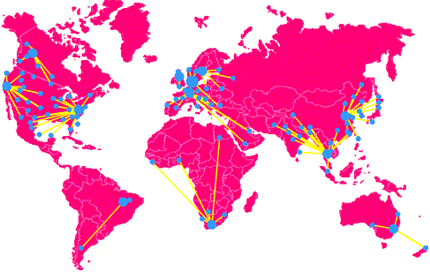word of mouth marketing forum london
thanks to the excellent goviral newsletter i found out about the word of mouth marketing forum 2008 conference in london. the topics were how to develop effective and integrated word of mouth strategies, identifying influencers, creating trusted relationships with customers, engaging with communities across networks, word of mouth tools like seeding panels, social networks, blogs, buzz and viral campaigns, learning from contagious stories – why some campaigns get talked about more than others and how to calculate the value and effects of word of mouth marketing.
robin hilton wrote a report on yesterday’s word of mouth marketing forum at the warc wom forum blog. the conference provided a mix of case studies, theories and how to’s, starting with what word-of-mouth marketing is “giving people a reason to talk about your product/service and making it easier for that conversation to take place” (source womma) to wom as a discipline, read more.
a couple of my friends were there like paul marsden and martin oetting but i was hoping to find some more material from this conference online like blog posts, slideshows or video material. hopefully some of the speakers or participants will provide more information for the ones who couldn’t make it there.
(via goviral newsletter)
on another note, check out this article on “common word-of-mouth beats ‘highly-connected’ influencers” from the december 2007 issue of the journal of advertising research.
“we find that trying to track down key influencers, people who have extremely large social networks, is typically unnecessary and, more importantly, can actually limit a campaign or advertisement’s viral potential,” said james coyle. “instead, marketers need to realize that the majority of their audience, not just the well-connected few, is eager and willing to pass along well-designed and relevant messages.”
the study reinforced that consumers respond more to messages that are unique and trusted. in addition, consumers who believe they are capable of performing the advertised behavior are more willing to pass along information to friends and relatives within their social networks. coyle added that this isn’t new. “it’s always been this way. what’s changed is that digital media makes it so easy for everyone to forward messages to contacts within their social networks. for most everyone, digital media just extends a very human desire to help others.”
(via guy kawasaki)


